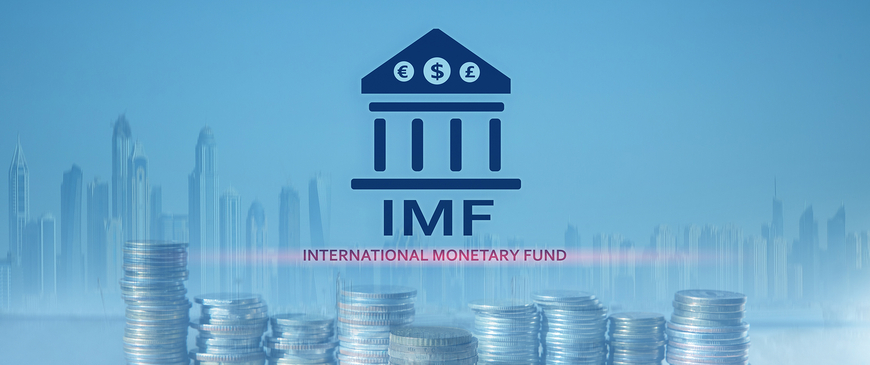
The IMF should introduce a cap on its surging lending costs
As the world’s finance ministers and central bankers gathered in Marrakech for the Annual Meetings of the International Monetary Fund last week, they fretted that an already weak global economy might buckle further under ‘higher for longer’ interest rates. But they should also have looked closely at how escalating borrowing costs are deepening the woes of the IMF itself.
The IMF is the port of call for countries in debt distress to seek bailouts and get back on their feet. But the institution is beset by geopolitics. Chinese creditor institutions, including the government, have become major competitors to the IMF, but they have been reluctant to allow debt cuts, which would mean they would take losses. This makes it harder for the IMF to facilitate debt restructurings, because all other creditors are more hesitant to agree to a write-down if a key creditor is unwilling to share the burden.
The competition from China and other bilateral creditors has also been intensifying: countries in distress are increasingly turning to them, especially China, whose overseas bailouts correspond to 20 % of total IMF lending over the past decade, and 40 % in the three years to 2021.
On top of these struggles, the cost of borrowing from the IMF for emerging market and middle-income economies has now rocketed upward. The IMF’s main cost of lending is driven in part by the interest rate on its quasi-currency: special drawing rights. That rate is derived from the interest rates of the five currencies in the SDR basket – the dollar, euro, renminbi, yen, and pound sterling. As Western central banks swiftly hiked interest rates to tackle the inflation stoked by the pandemic and Russia’s war on Ukraine, the cost of borrowing from the fund has surged, and can currently be up to 8%.
In the past 50 years, large volumes of IMF financial assistance have been a stabilizing force because they tended to coincide with a loosening of global monetary conditions. In the 1980s, another period when many low- and middle-income countries were faced with a debt crisis, the IMF lending rate started to decline once borrowing picked up sharply. Similarly, the large-scale IMF programs after the 2008 global financial crisis were accompanied by a long period of ultra-loose monetary policy.
But today, unlike in other periods of global recessions or low growth, interest rates in big, advanced countries that primarily drive the IMF’s main lending rate have risen, not fallen. Now, many countries need the IMF’s financing precisely while its main lending rate is shooting up.
High lending rates will make it harder for IMF programs to promote economic recoveries. Stricken countries will be reluctant to turn to the fund even though bond market finance for many LMICs has frozen up, and they potentially face their most serious debt crisis since the 1980s.
For debtor countries, the burden of repaying high interest rates to the IMF itself takes away much-needed cash, possibly deepening their budgetary woes and hampering their prospects of economic recovery. For example, IMF programs aim to assure private investors that a country will escape its financial crisis. But the more expensive it gets for countries to service their debt from the IMF – the senior creditor – the less faith private investors may have in also being repaid.
The world’s lowest-income countries are sheltered from the higher rates because they can receive subsidized low-cost loans from the IMF’s Poverty Reduction and Growth Trust. Still, 54 predominantly middle-income countries have taken out loans from the IMF’s General Resource Account, which are subject to the increasing rates. And the higher interest rate on the SDR puts pressure on the PRGT’s already strained finances. That is because the PRGT’s creditors are remunerated at the higher SDR rate, which is far bigger than the zero interest loans the trust provides. That means the creditors must increasingly subsidize the PRGT.
To tackle these issues, the IMF should curb its main lending rate – the SDR lending rate – by temporarily capping it. There is a precedent: in 2014, the IMF introduced a floor to prevent it from turning negative during a period when central banks were pushing interest rates down aggressively.
A cap would make the IMF’s bail-out programs more accessible and effective for all countries at a time of multiple shocks to the global economy. Lower-income countries stand to benefit from falling SDR charges, as these flow directly from debtor countries to rich creditor countries, without ever entering the IMF’s own pockets. And a cap on the IMF’s surging lending rate will discourage debt-distressed countries from turning to bilateral creditors who, unlike the IMF, may prioritize political leverage or access to natural resources over restoring economic stability.
All this will help to protect the IMF, which is still the best placed institution to help countries in debt distress, as its multilateral character puts creditors' national interests at arm’s length. The US and the EU are the IMF’s largest shareholders. They worry about China’s growing influence and have expressed indignation about the lack of condemnation of Russia’s invasion from dozens of countries. If they want to turn the tide, they should keep IMF lending affordable for emerging market and middle-income countries in their time of need.
Sander Tordoir is senior economist at the Centre for European Reform (CER), a think-tank devoted to making the European Union work better and strengthening its role in the world. The opinion piece draws from his CER research with Tobias Krahnke.
